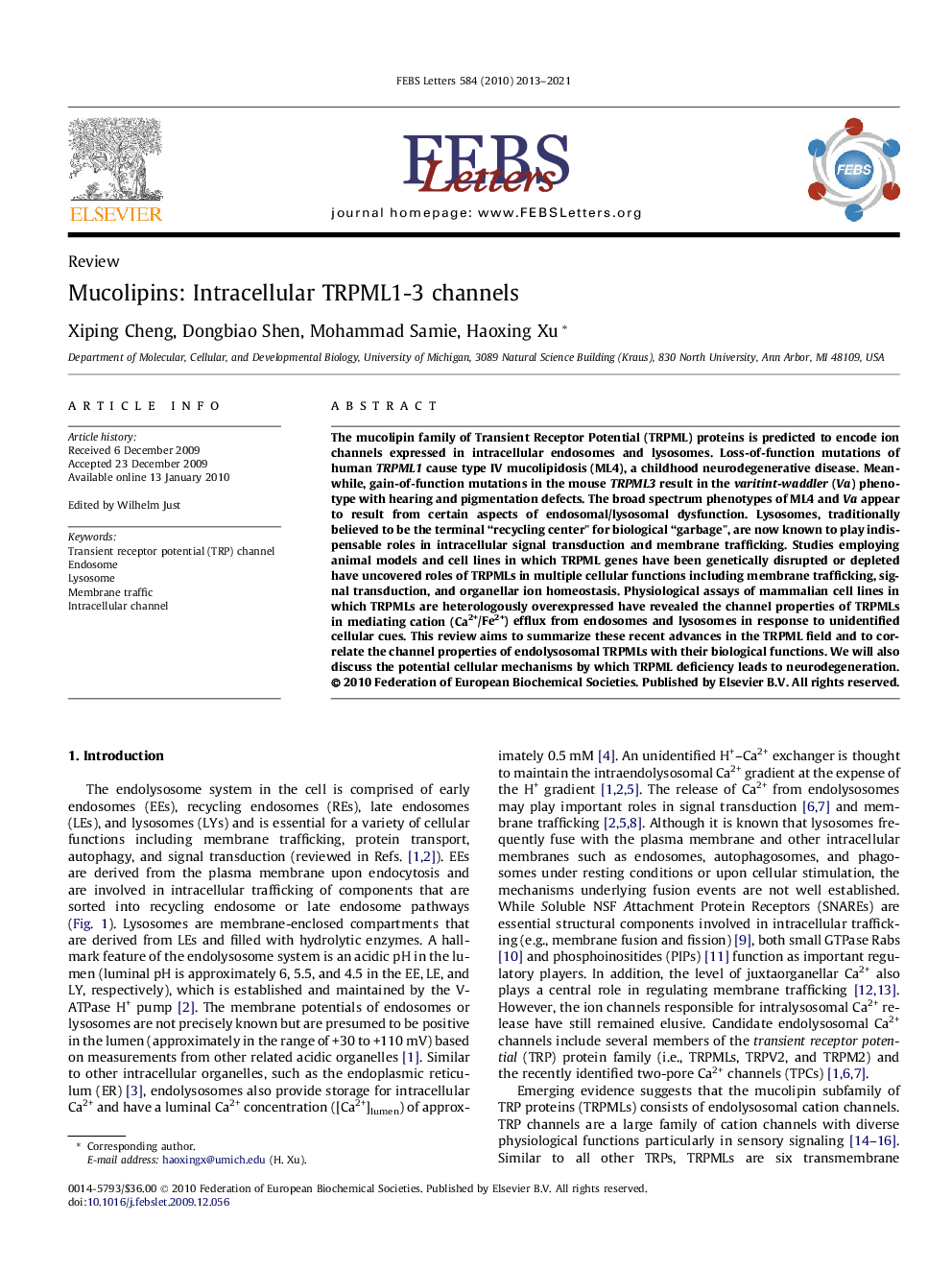| Article ID | Journal | Published Year | Pages | File Type |
|---|---|---|---|---|
| 2049687 | FEBS Letters | 2013 | 9 Pages |
The mucolipin family of Transient Receptor Potential (TRPML) proteins is predicted to encode ion channels expressed in intracellular endosomes and lysosomes. Loss-of-function mutations of human TRPML1 cause type IV mucolipidosis (ML4), a childhood neurodegenerative disease. Meanwhile, gain-of-function mutations in the mouse TRPML3 result in the varitint-waddler (Va) phenotype with hearing and pigmentation defects. The broad spectrum phenotypes of ML4 and Va appear to result from certain aspects of endosomal/lysosomal dysfunction. Lysosomes, traditionally believed to be the terminal “recycling center” for biological “garbage”, are now known to play indispensable roles in intracellular signal transduction and membrane trafficking. Studies employing animal models and cell lines in which TRPML genes have been genetically disrupted or depleted have uncovered roles of TRPMLs in multiple cellular functions including membrane trafficking, signal transduction, and organellar ion homeostasis. Physiological assays of mammalian cell lines in which TRPMLs are heterologously overexpressed have revealed the channel properties of TRPMLs in mediating cation (Ca2+/Fe2+) efflux from endosomes and lysosomes in response to unidentified cellular cues. This review aims to summarize these recent advances in the TRPML field and to correlate the channel properties of endolysosomal TRPMLs with their biological functions. We will also discuss the potential cellular mechanisms by which TRPML deficiency leads to neurodegeneration.
